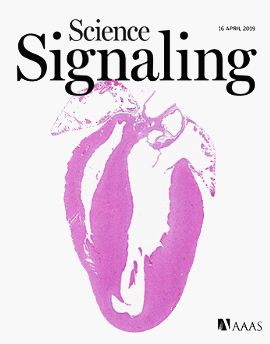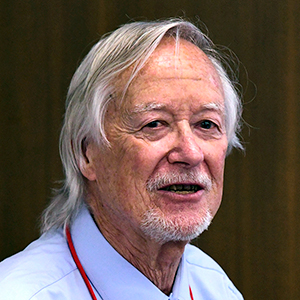 Without the GR, the mouse heart is enlarged, top, and the animal eventually has heart failure. However, a heart that lacks the MR, middle, or both receptors, bottom, functions normally.
Without the GR, the mouse heart is enlarged, top, and the animal eventually has heart failure. However, a heart that lacks the MR, middle, or both receptors, bottom, functions normally.Two proteins that bind to stress hormones work together to maintain a healthy heart in mice, according to NIEHS scientists and their collaborators. These proteins, stress hormone receptors known as the glucocorticoid receptor (GR) and mineralocorticoid receptor (MR), work together to help support heart health. When the signaling between the two receptors is out of balance, the mice have heart disease.
The work, published April 16 in Science Signaling, may lead to development of therapeutic compounds that help people who have an increased risk of a heart attack.
Stress kills
Stress increases risk of dying from heart failure by stimulating adrenal glands to make a hormone called cortisol, which is involved in the fight-or-flight response. Cortisol binds to GRs and MRs in different tissues of the body to reduce inflammation, among other functions.
If the level of cortisol remains too high over a long period of time, common risk factors for heart disease may arise, such as increased cholesterol and glucose in the blood and high blood pressure.
Lead author Robert Oakley, Ph.D., first identified a malfunctioning GR in the 1990s when he was a graduate student working with John Cidlowski, Ph.D., at the University of North Carolina at Chapel Hill.
 Oakley is a staff scientist in Cidlowski’s research group. (Photo courtesy of Steve McCaw)
Oakley is a staff scientist in Cidlowski’s research group. (Photo courtesy of Steve McCaw)Soon after the discovery, other scientists determined that people with above average amounts of this altered GR had greater risk of heart disease than those who had normal GR. Years later, when Oakley and Cidlowski joined NIEHS and formed the Molecular Endocrinology Group, they decided to make a mouse strain without heart GR and monitor the animals’ heart function.
These mice spontaneously developed an enlarged heart and experienced heart failure and death. When the team produced a mouse strain that was missing cardiac MR, the hearts of these animals functioned normally.
Oakley and Cidlowski then wondered what would happen if both receptors were missing from heart tissue, so they made another mouse strain that lacked both GR and MR. They guessed that these double-knockout mice would have the same or worse heart problems as the mice without GR.
'To our surprise, the hearts were resistant to heart disease,' Oakley said.
Treating heart disease
Cidlowski theorized why the double-knockout mice appeared to be protected against heart disease. He said these mice did not have gene changes that led to heart failure, as seen in mice lacking GR.
 In addition to heading the Molecular Endocrinology Group, Cidlowski is chief of the NIEHS Signal Transduction Laboratory. (Photo courtesy of Steve McCaw)
In addition to heading the Molecular Endocrinology Group, Cidlowski is chief of the NIEHS Signal Transduction Laboratory. (Photo courtesy of Steve McCaw)At the same time, the mice exhibited a gain in the function of genes that protect the heart. Although the hearts of these mice function normally, they are slightly enlarged compared with the hearts with no MR.
In terms of treating people with heart disease, Cidlowski said that researchers in the past designed synthetic hormones that worked on one or the other of the two receptors, but not both at the same time. 'We propose that since GR and MR cooperate, a better approach is to make a drug that works on both receptors simultaneously,' Cidlowski said. 'It could help patients with heart disease and prevent subsequent heart diseases.'
Citation: Oakley RH, Cruz-Topete D, He B, Foley JF, Myers PH, Xu X, Gomez-Sanchez CE, Chambon P, Willis MS, Cidlowski JA. 2019. Cardiomyocyte glucocorticoid and mineralocorticoid receptors directly and antagonistically regulate heart disease in mice. Sci Signal 12(577):eaau9685.










